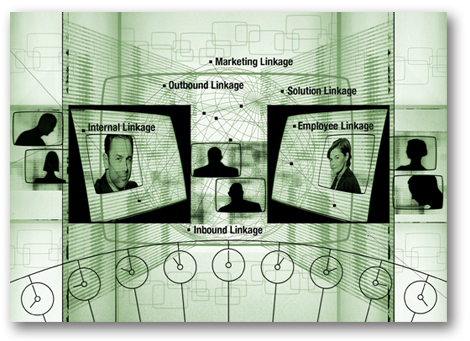
As social media swept aside many old marketing assumptions, many companies have discovered they have a lot less control over their brands than they used to. Today’s consumers and B2B customers wield enormous power to define the market’s perceptions of brands through their online and offline conversations.
In this new era, Marketing Linkage becomes vital to your organization’s survival. To maximize the impact of your initiatives, you need to bring together inbound and outbound marketing, internal and external communications, employees as brand ambassadors and your solutions into an integrated marketing strategy that we call Marketing Linkage.
Inbound Linkage. To elevate your brand and engage your target audience, your digital strategy should utilize inbound marketing, social media and content marketing. And by integrating communications across multiple platforms, you can blend web optimization, lead capture programs and the power of public relations to heighten your site’s visibility, drive traffic and increase conversions.
Outbound Linkage. Outbound marketing picks up where inbound leaves off with high-touch communications focused on the individual buyer’s needs. Have you taken a close look at your brand recently? How consistent and integrated are your offline and online brands? How well are you using marketing automation to align your initiatives with the sales team?
Internal Linkage. When your sales and marketing teams are aligned, they can speak to prospects and customers with a unified message. And by breaking down internal silos, you open up new possibilities for collaboration and activation strategies for profiling, ranking leads, assigning priorities and following up with top prospects.
Employee Linkage. By building a purpose-driven brand and culture, your company will attract people to work for the organization, drive engagement and improve retention. Think of it as Employee 2.0, where HR and marketing come together to help employees become brand ambassadors and deliver consistent, “on message, on strategy” communications via social media and offline interactions with their networks.
Solution Linkage. When you have a deep understanding of buyers’ points of pain, you can build solution sets that meet client/customer needs. By elevating your message, you can set your company apart from the competition and convey the value your product/service offers to prospects.
So how about you? What other examples of Marketing Linkage do you think are important? How have you built Marketing Linkage in your organization? Please share your perspective to to help other marketers in the comments below.